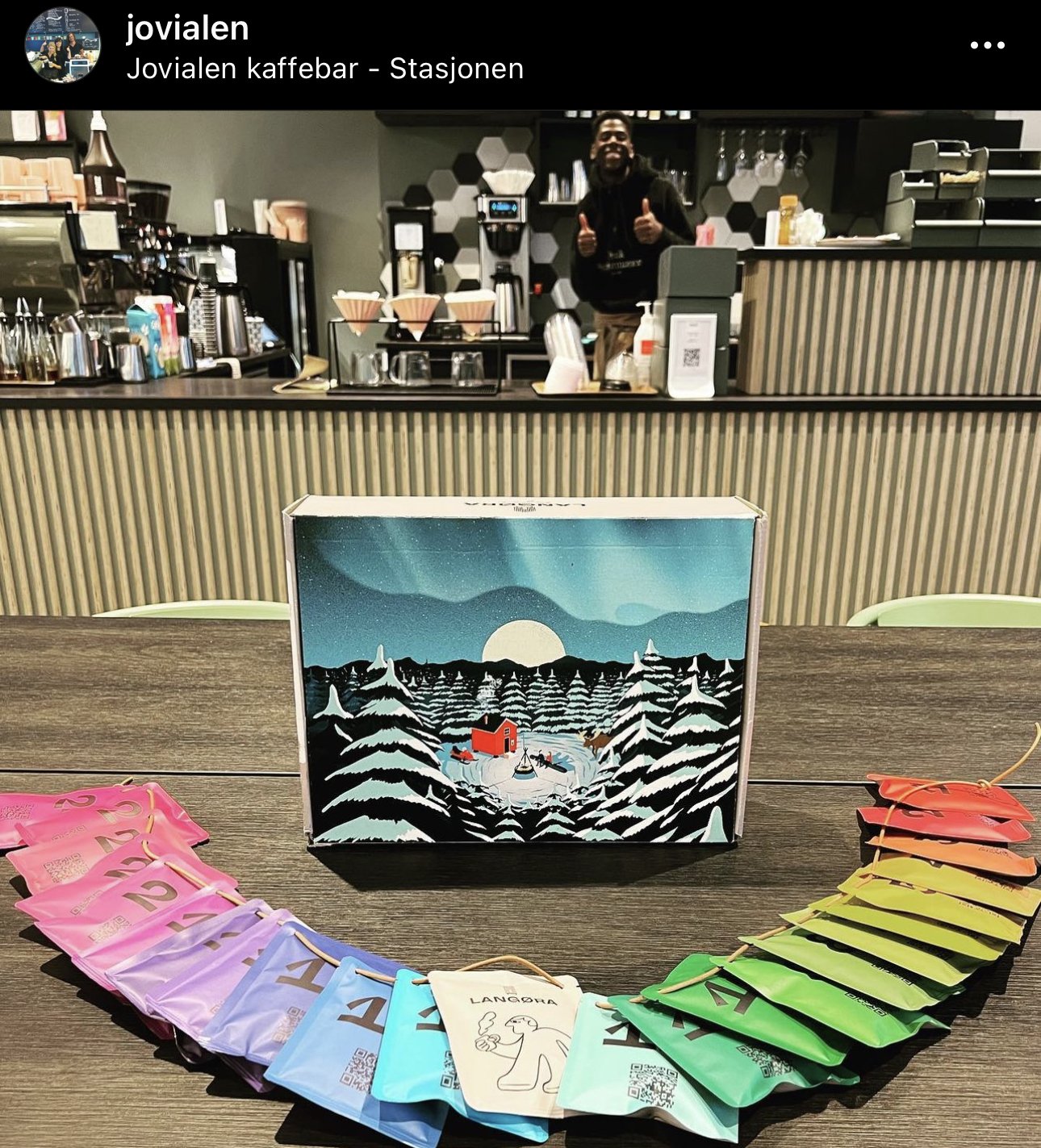Luke 1
Kjære kaffevenn,
Da er endelig adventstiden i gang. Tusen takk for at du har skaffet deg årets adventskalender fra Langøra! Vi håper du blir fornøyd med kaffene som gjemmer seg i lukene, og at du får noen herlige kaffeøyeblikk frem mot jul.
PS! - Husk å noter ned dine favoritter, da vi har noen kilo igjen av de ulike kaffene som vi kommer til å brenne på nyåret. Da blir det et lite nyttårssalg hvor du kan sikre deg noen godsaker til en fin deal. - Inntil da, ta vare på dere selv og kos dere med kalenderen! - Hilsen oss i Langøra
Konkurranse:
Del dine bilder og videoer av Langøras adventskalender på TikTok, Instagram og Facebook under #langørakaffe og @langorakaffe .
Vi trekker tre vinnere som får 3 måneders kaffeabonement på nyåret.
(ved å delta i konkurransen godtar du at vi kan bruke bildene i markedsføring)
El Ocaso by Santiago Patiño
COUNTRY: Colombia
FARM/COOP/STATION: El Ocaso
VARIETAL: Papayo
PROCESSING: Anaerobic Natural
ALTITUDE: 1700-1850 m.a.s.l
OWNER: Santiago Patiño
REGION: Salento, Quindio
FLAVOUR NOTES: Pineapple, jasmine, funky jamaican rum, strawberry jam
ABOUT THIS COFFEE
This coffee was grown by Santiago Patiño at the farm El Ocaso. It was carefully hand-picked in order to select only the ripest cherries.
The cherries were then fermented for 40 hours in an anaerobic environment. Afterwards, the coffee was sundried until ideal
moisture content was achieved.
This microlot is 100% Papayo. This varietal is a rare mutation that took place in Acevedo, Huila. Ripe cherries turn orange in colour and the
shape is similar to a papaya. The cup profile is complex with defined jasmine, sugar cane, and sweet chocolate notes.
COFFEE IN COLOMBIA
Although coffee production in Colombia did not become a large commercial industry until the 19th century, it is likely that coffee was introduced to Colombia about a century earlier by Jesuit priests.
Once commercial production started, it spread quickly. The first commercial coffee plantations were established in the northeast, near the border with Venezuela. Today, coffee is widespread and grown commercially in 20 of Colombia’s 32 Departments.
Historically, Colombia’s most renowned coffee-growing region has been the Eje Cafetero (Coffee Axis), also known as the ‘Coffee Triangle’. This region includes the departments of Caldas, Quindío and Risaralda. With a combined total area of 13,873 km² (5356 mi²), the region covers about 1.2% of the Colombian territory and composes 15% of the total land planted under coffee in the country. The region has also been declared a UNESCO World Heritage site.
While the Eje Cafetero is still a coffee-producing powerhouse, coffee production in Colombia now extends far beyond this zone. In recent years, the departments of Huila, Tolima, Cauca and Nariño have become sought after and well-known coffee-growing regions. Today, they are the largest producers of coffee in Colombia by volume.
Today, there are an estimated 540,000 coffee producers in the country; around 95% of these are smallholder farmers with landholdings that are under 5 hectares. These farmers collectively contribute around 16% of the country’s annual agricultural GDP.





















